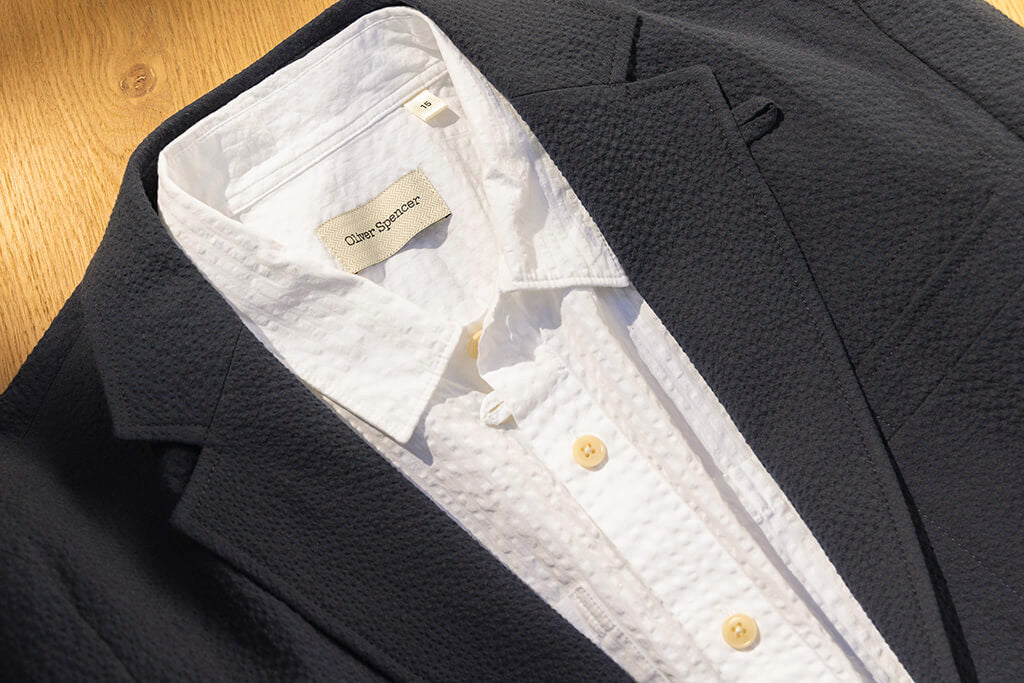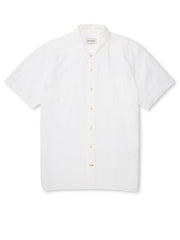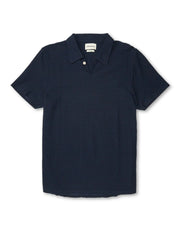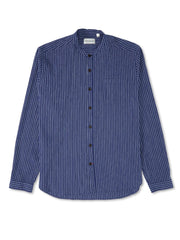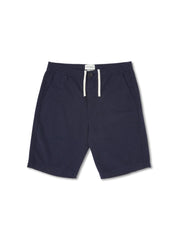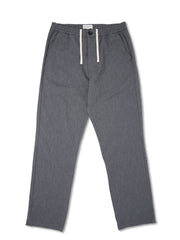Anyone with even a passing interest in clothing who has watched the film adaptation of Harper Lee’s To Kill a Mockingbird will know a seersucker suit when he sees one. In the 1967 cinema classic, Atticus Finch, played by the impossibly cool Gregory Peck wears a stunning three-piecer cut in what has become known, alongside linen, as a man’s go-to summer fabric, not least because it was widely appropriated by first, the working-class men of America’s deep South around the turn of the 20th century, and then secondly by high-standing social figures, academics and those of political clout later on while exercising their right to a little inverse snobbery. As such, today, seersucker no longer has any social connotations - it’s just a cracking summer fabric that can be worn in all manner of styles.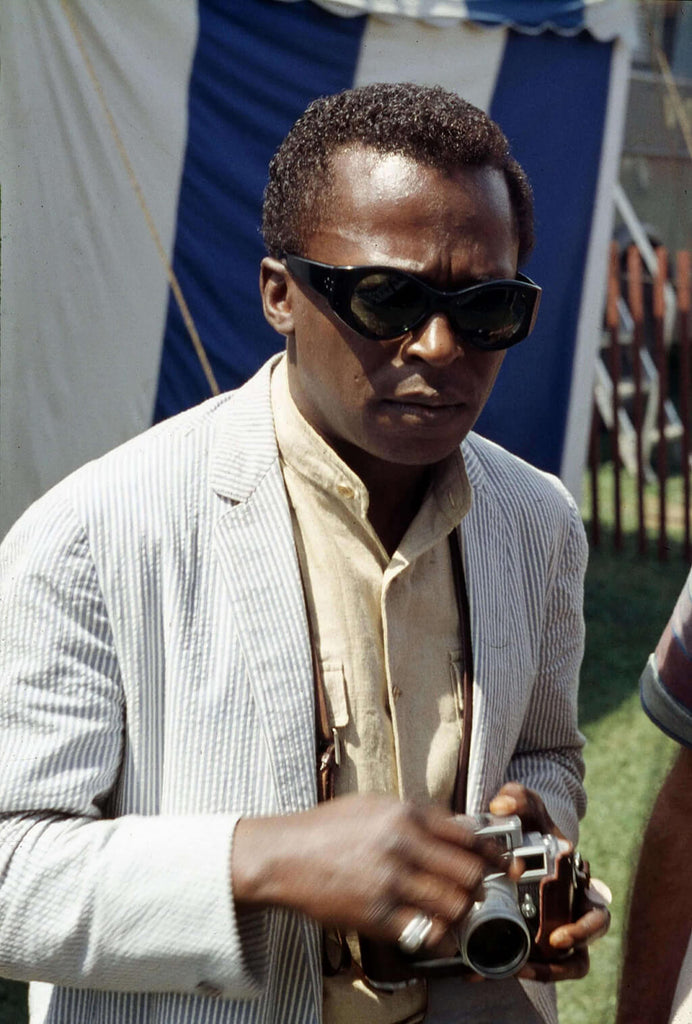
Shop The Looks
While the seersucker suit was reputedly born in New Orleans in 1909 at the skilled hands of a haberdasher named Joseph Haspel (he designed the very same suit worn by Peck), the dimpled fabric gained widespread popularity when it began to be adopted by Ivy League students in the 1920s. Chief among them was Princeton’s preppy lot, who perhaps enjoyed the liberal connotations of that wrinkled, carefree finish, peddled to them by master tailors Brooks Brothers no less. While we’re on the subject of finish, seersucker actually takes its name from the Persian words شیر shîr and شکر shakar, literally meaning "milk and sugar", from the resemblance of its smooth and rough stripes to the smooth texture of milk and the bumpy texture of sugar. By the 1940s, Princeton’s boys’ predilection for seersucker had lent it something of a sartorial halo, so much so that the Duke of Windsor wore a two-piece seersucker while on holiday in the Italian riviera. Despite its slightly crumpled appearance, the suit was widely acknowledged as the preeminently tasteful summer fabric, sported by only the most discerning of stylish chaps. For a fabric whose roots were very much ingrained in the working-class South, seersucker had in a very short space of time become the choice of the rich and flamboyant, but that balance would once again shift in 1958 when the jazz impresario Miles Davis wore seersucker on the cover of his live album At Newport 1958.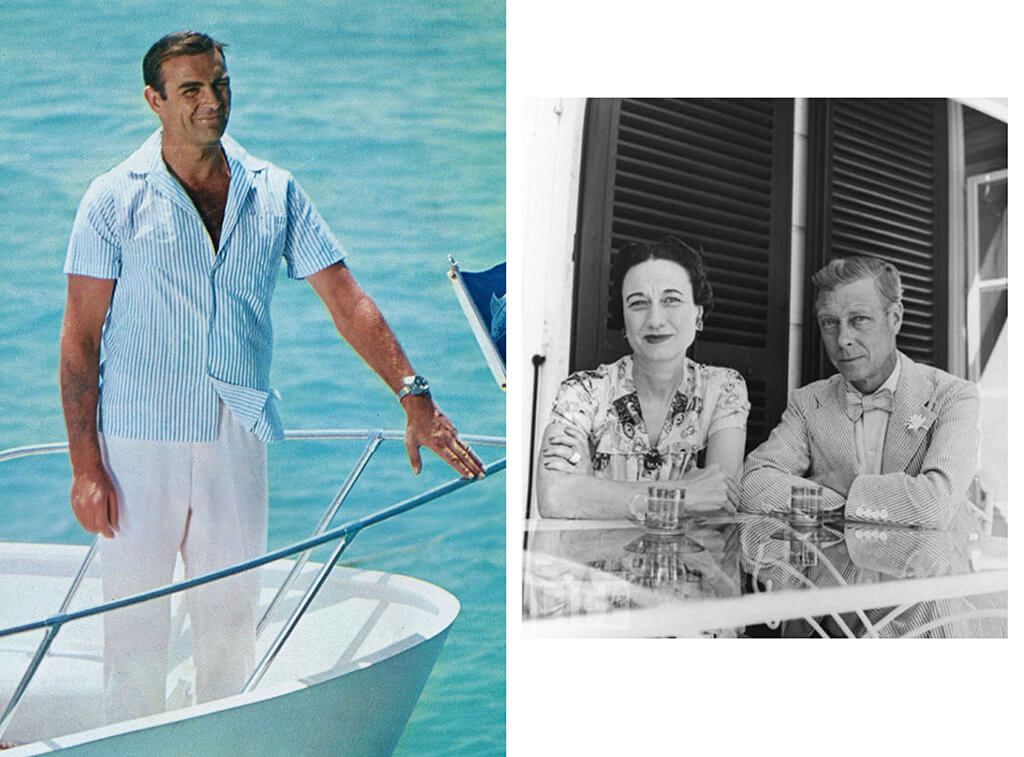
Shop The Looks
|
|
These days, seersucker is a thoroughly democratic fabric, with no affiliations other than stylish folk. Yes, if you find yourself with an invitation to the Kentucky Derby, you may feel obliged to summon up your Southern gentleman sensibility and don a classic seersucker pin-stripe suit, but otherwise, this dimpled cotton can be worn in all social situations, whether as a short-sleeve shirt beneath a blazer or as a shirt itself, half-tucked into a pair of shorts and sleeves casually rolled up.
Shop The Looks
|
|
By now, you’re thinking, ‘So why is it regarded as a summer fabric only?’ Ah, funny that you ask… Seersucker is of course cotton that has been woven in such a way that the threads bunch together, hence it has a natural stretch. The dimples vastly reduce the surface area of the fabric that actually rests on your skin, creating dimples that act as micro air pockets that keep your skin cool. Given that it has a natural crumple, this placates the burden of ironing somewhat too. So there you have it. Seersucker. It’s amazing. This season, we’ve created some really interesting pieces in this awesome fabric so that your summer wardrobe is not only functional but is also full of interesting textures too. Embrace the crumple!
